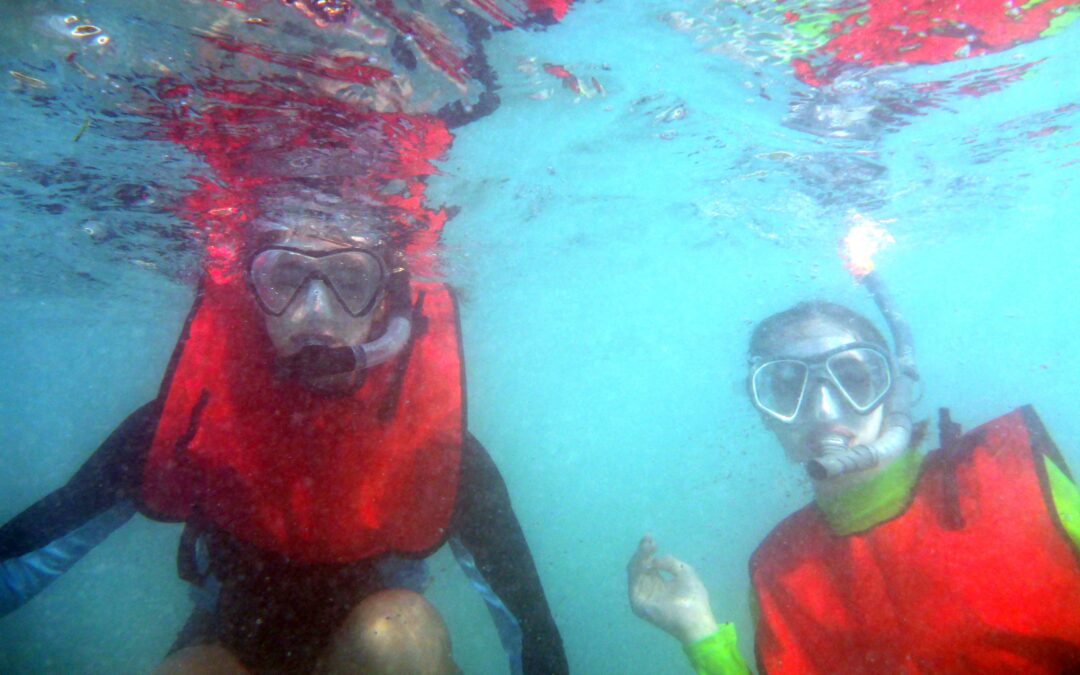We travel back in time today, walking in the footprints of Annaberg sugar plantation slaves. From the moment we pass by the foundation ruins of slave huts, hovels too small to imagine anyone living there easily, we question history. We try to imagine hillsides covered with cane instead of dry tropical forest that we see today. Steep mountainsides rise above Annaberg windmill, with a horse mill at its base dominating the landscape.
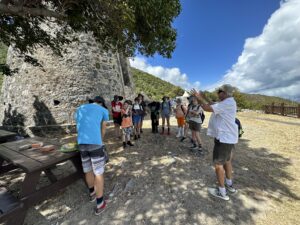
We conjure images of slaves cutting, stacking, and dragging heavy cane stalks down mountainside to the mill; backbreaking work 12 hours a day under burning sun. Slaves feed sugar cane through hungry rollers, sending juice along troughs to the boiling house where slaves stoke fires and skim boiling pots of cane juice until it is exactly right. From the last kettle to the drying rack, the process drains the life from the workers. We try to understand WHY. We know that intense labor is necessary for the plantation owners to profit, but as we look at history here at Annaberg from the slave’s perspective, it is difficult to understand being treated like an animal. We have deep discussions, sharing our questions and perspectives. We even simulate being made to work the rollers on the horse mill by circling the center only 3 times, after which we are exhausted under the burning sun. It is unimaginable to think that slaves had to do just that, push a heavy pole around and around to turn the rollers for hours at a time.
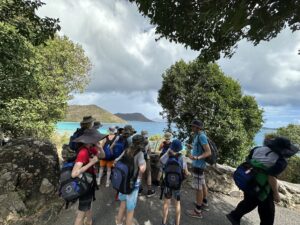
To our delight, in the cook house, Miss Olivia is baking a traditional johnny cake and sharing her sorrel tea and mango juice. She is generous in making sure we all get to taste and drink to our heart’s content. Her little bake house even shelters us from the sporadic downpours that roll over from Tortola.
Mr. Charles invites us into his garden, gladly cracking coconuts for us to eat, cutting sugar cane to satisfy our sugar cravings, and letting us sample his horseradish. Weldon, a Friends of the Virgin Islands volunteer, answers our questions about plantation working conditions and sugar production. History comes alive for us at Annaberg.
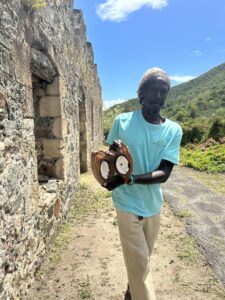
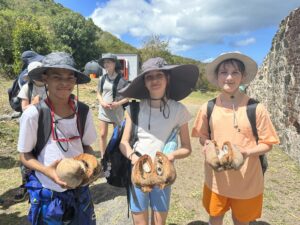
Our afternoon brings us our first snorkel. If one were to ask Mike, Kyle, and Ella, they might say it is a bit like herding cats. If one were to ask a Phoenix kid, exclamations of glee might be the most common response. Some of us begin with mask and snorkel issues, fear of dying, being eaten by a marine critter, or drowning in deep water, but once we are in the groove, surrounded by flashing fish, curiosity and exhilaration of being in a coral reef world takes over. As we glide along like fish ourselves, we encounter a gracefully paddling Hawksbill sea turtle. He meanders along, probably wondering what kind of school of creatures we are, underwater and shouting through our snorkels in our enthusiasm. It is surely a gift for us to see a sea turtle on our first snorkel adventure.
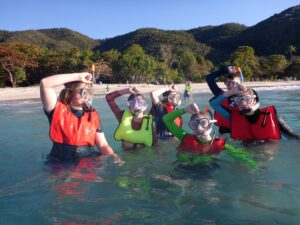
After a splash at the beach, just for fun, we head to dinner….grilled by our own Chef Kyle tonight.
Once it is totally dark, we join Ranger Naturalist, Mark, on our beach for a Sky Talk to learn about the stars above. The sky is brilliant tonight, twinkling its welcome and sending us to bed listening to the gentle surf as we drift off to sleep.

